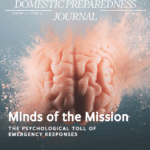
Archives

Carcass management is rarely top of mind for emergency managers, but during mass animal deaths, it tests preparedness, coordination, and public trust. Including it in all-hazards planning closes a critical gap and boosts community resilience.

Caring for the Affected at Family Assistance Centers
May 28, 2025
In moments of crisis, a well-executed family assistance center can offer clarity, connection, and compassion that victims’ families and survivors need to begin making sense of loss and change. Family assistance centers provide resources for support services, updates on victim identification, assistance with repatriation of remains, and reunification efforts. Discover

Agroterrorism: A Persistent but Overlooked Threat
March 19, 2025
Agroterrorism is not new. Considered a subset of bioterrorism, it has become an increasing concern to the U.S. With so much of the agriculture sector in private hands, preparedness leaders must take extra steps to engage stakeholders and incorporate them into planning efforts.

The Current State of the Opioid Crisis & Other Emerging Threats
January 22, 2025
Opioid deaths have surged dramatically since the pandemic. Manufacturers exploit legal loopholes and use precursor chemicals that often evade detection and regulation. These new and growing threats present challenges to public safety that demand innovative solutions and a proactive approach.

Preparing for the Next Biothreat: Lessons Not to Forget
January 15, 2025
In 2024, senior officials from hospitals, healthcare organizations, public health, emergency management, and other responder communities convened at two workshops to share the lessons they learned as leaders during the COVID-19 pandemic. Their lessons learned can help communities better prepare for the next biothreat.

Growing Foreign Threats to National Security, Part 1: Challenges and Considerations
October 23, 2024
Part 1 of a two-part series explores the nation-state threat and its implications for the emergency management community, regarding the operations, resilience, resourcing, strategies, and policies necessary to better prepare for future events.

The Ethics of Data in Disaster Management and Crisis Operations
October 23, 2024
As the demand for evidence-based decision-making continues to grow, emergency management professionals must commit to ethical data practices that respect the needs of the community and the rights of individuals. In times of crisis, data can save lives, but only if managed with care, responsibility, and respect for ethical principles.

Advisory Board Spotlight: Interview with Ray Barishansky, DrPH
October 23, 2024
Ray Barishansky, DrPH, is on the advisory board for the Domestic Preparedness Journal and has a passion for public health and emergency management. He sat down with the Journal’s Nicolette Casey to share his story. Learn about Dr. Barishansky’s journey from an EMT to a Doctor of Public Health.

Bridging Preparedness: State Medication Reserves for Pandemics and Beyond
August 14, 2024
New human cases of highly pathogenic avian influenza have been confirmed in the United States. Although most cases like this do not escalate to pandemic status, it is critical that communities be better prepared than they were for COVID-19. However, one study shows that preparedness gaps may hinder these efforts.

Five Key Domains of Incident Management
July 10, 2024
Effective incident management is a set of activities, not policy box-ticking of doctrine that may or may not be followed. A new free toolkit based on five key domains can help incident management teams assess and improve their effectiveness regardless of the incident, incident management team, and policy doctrine members





